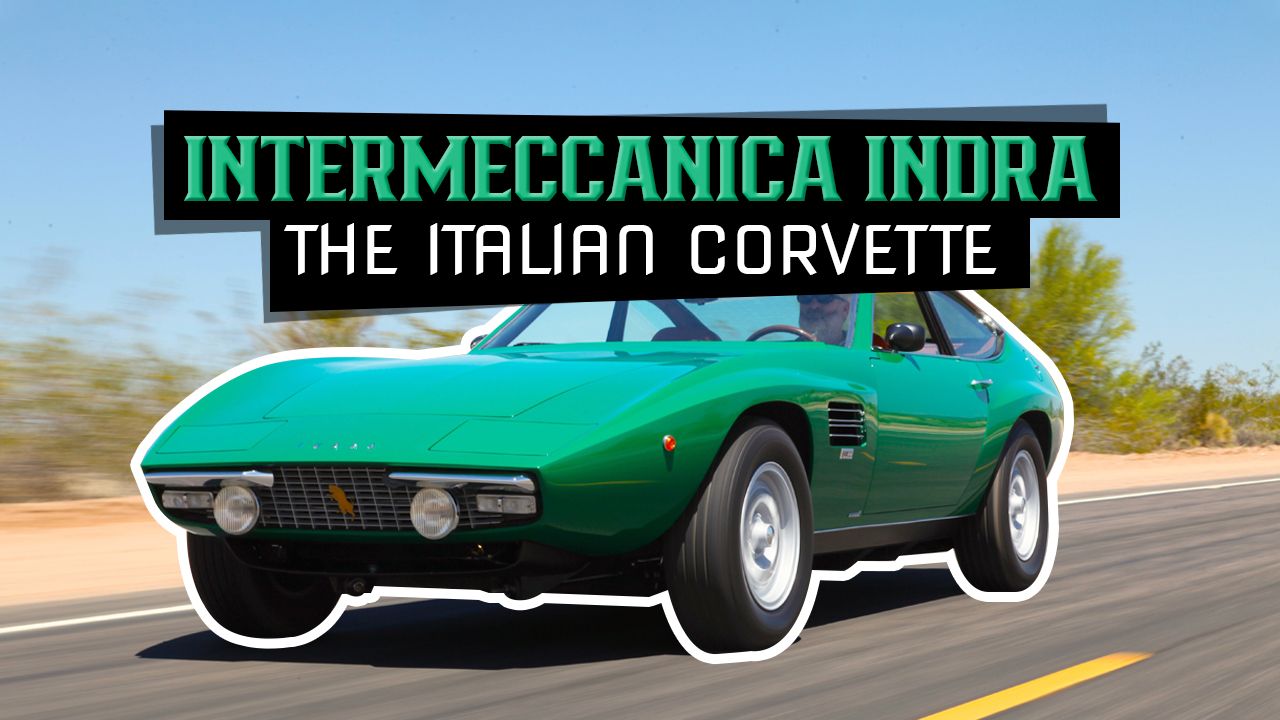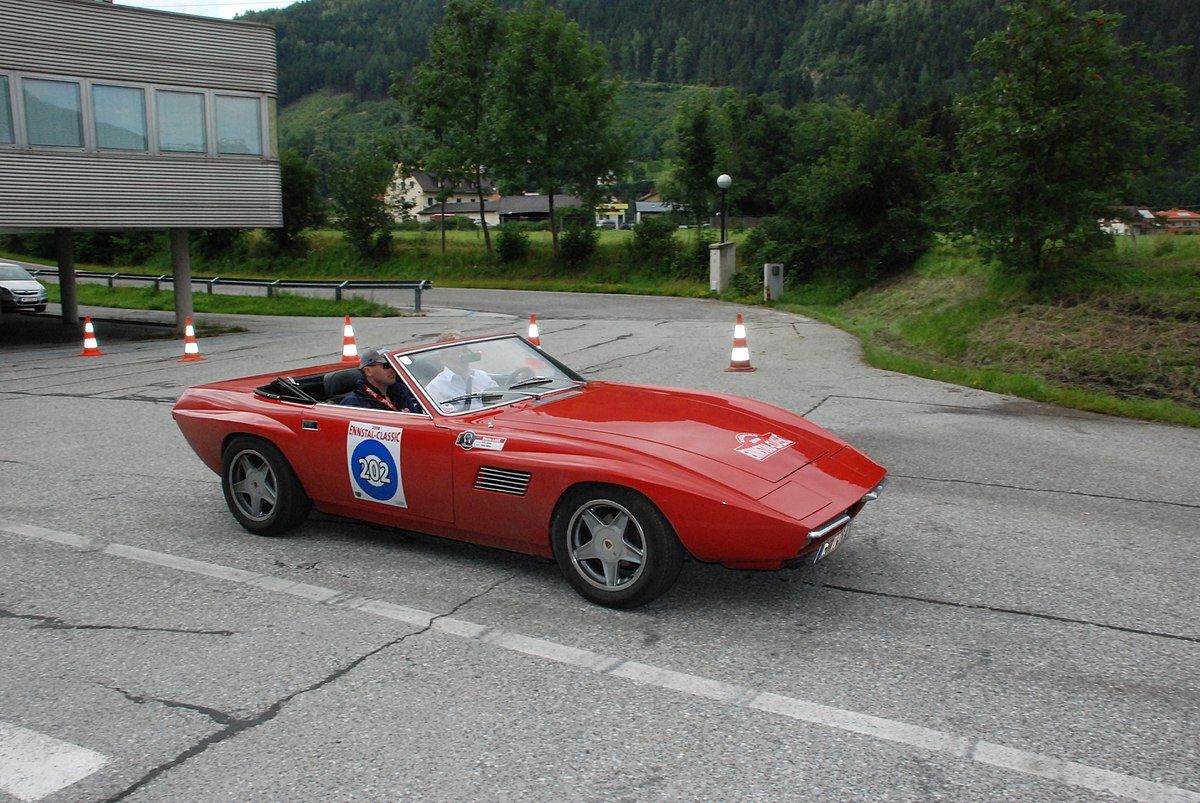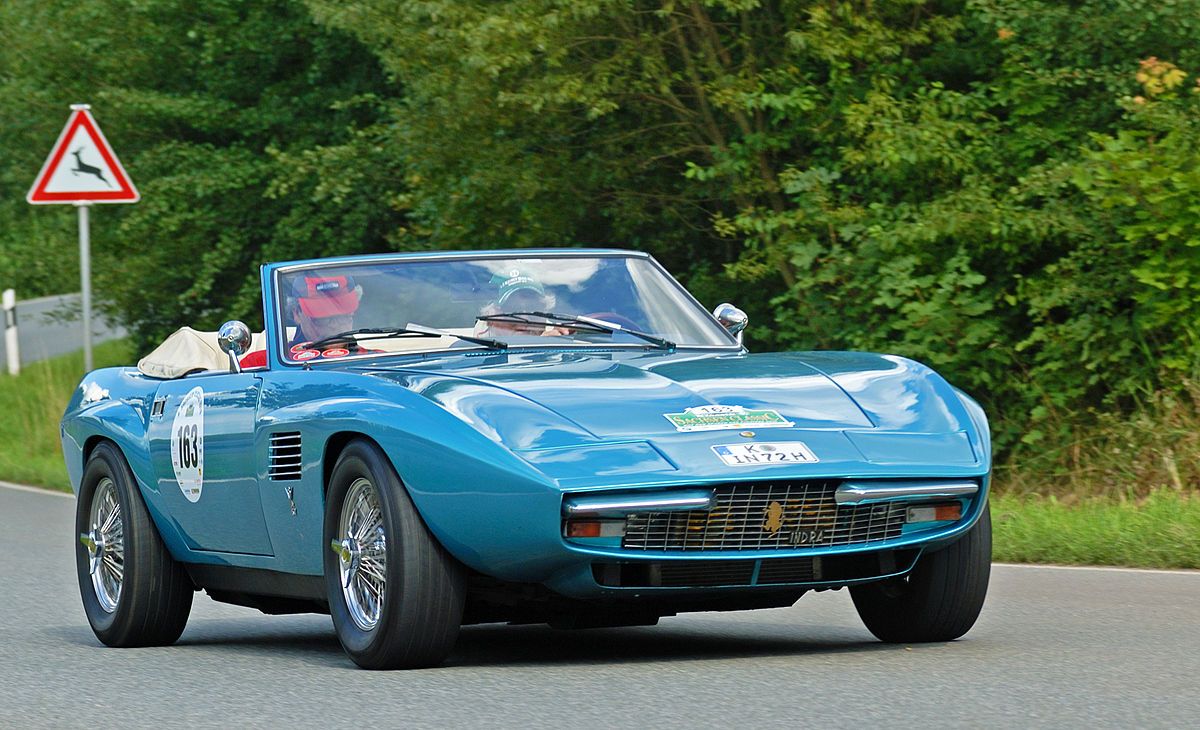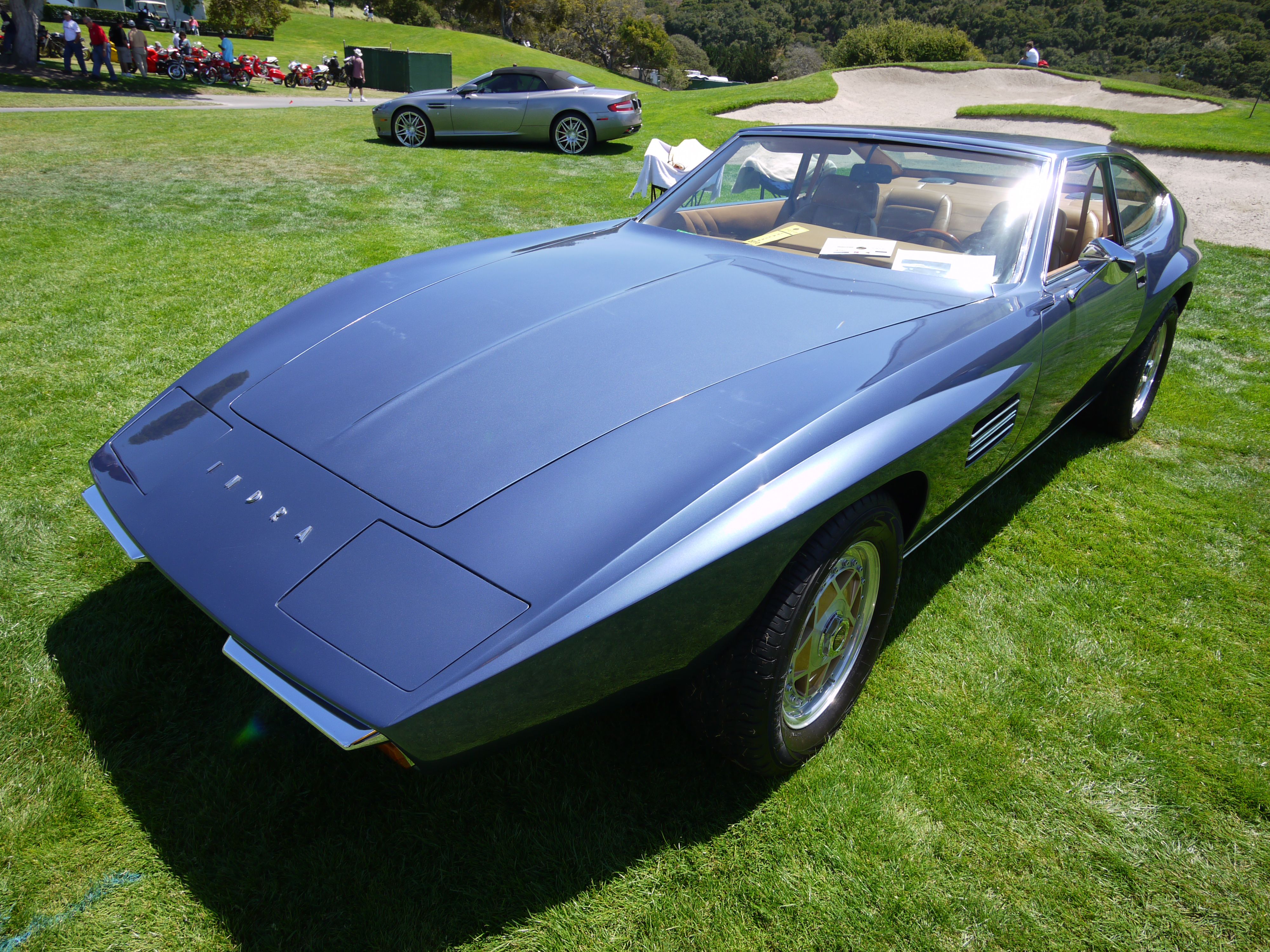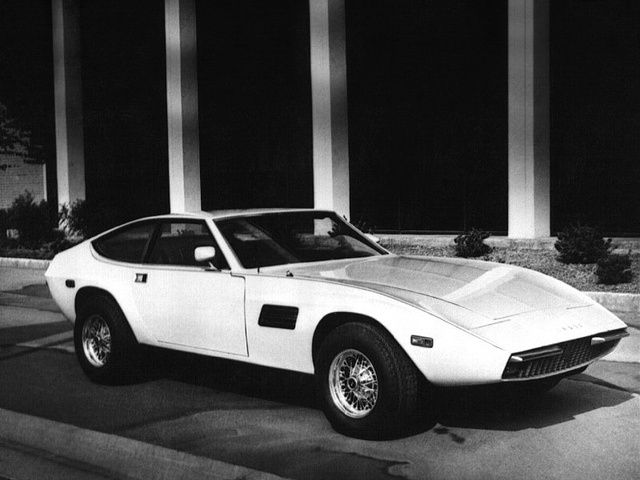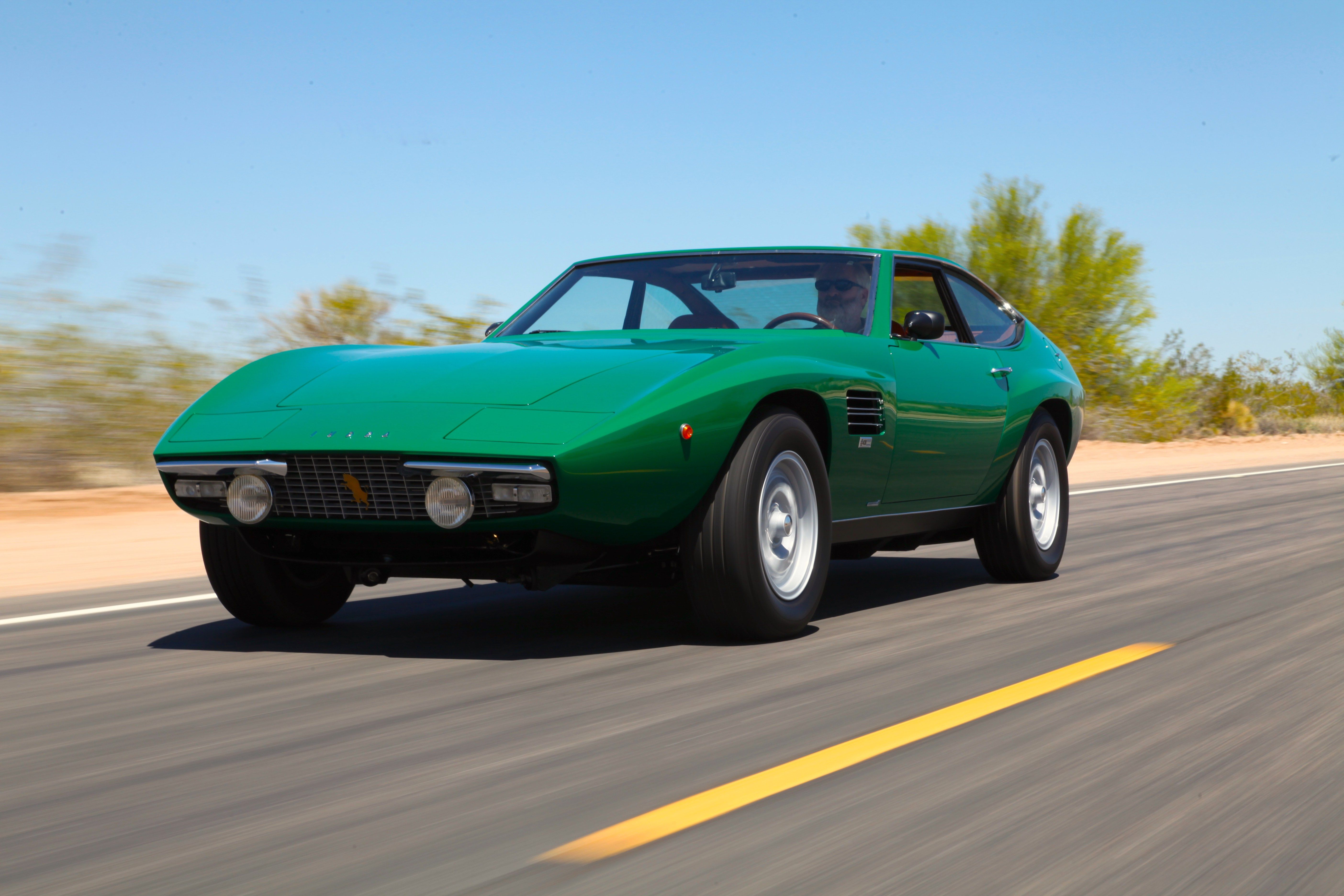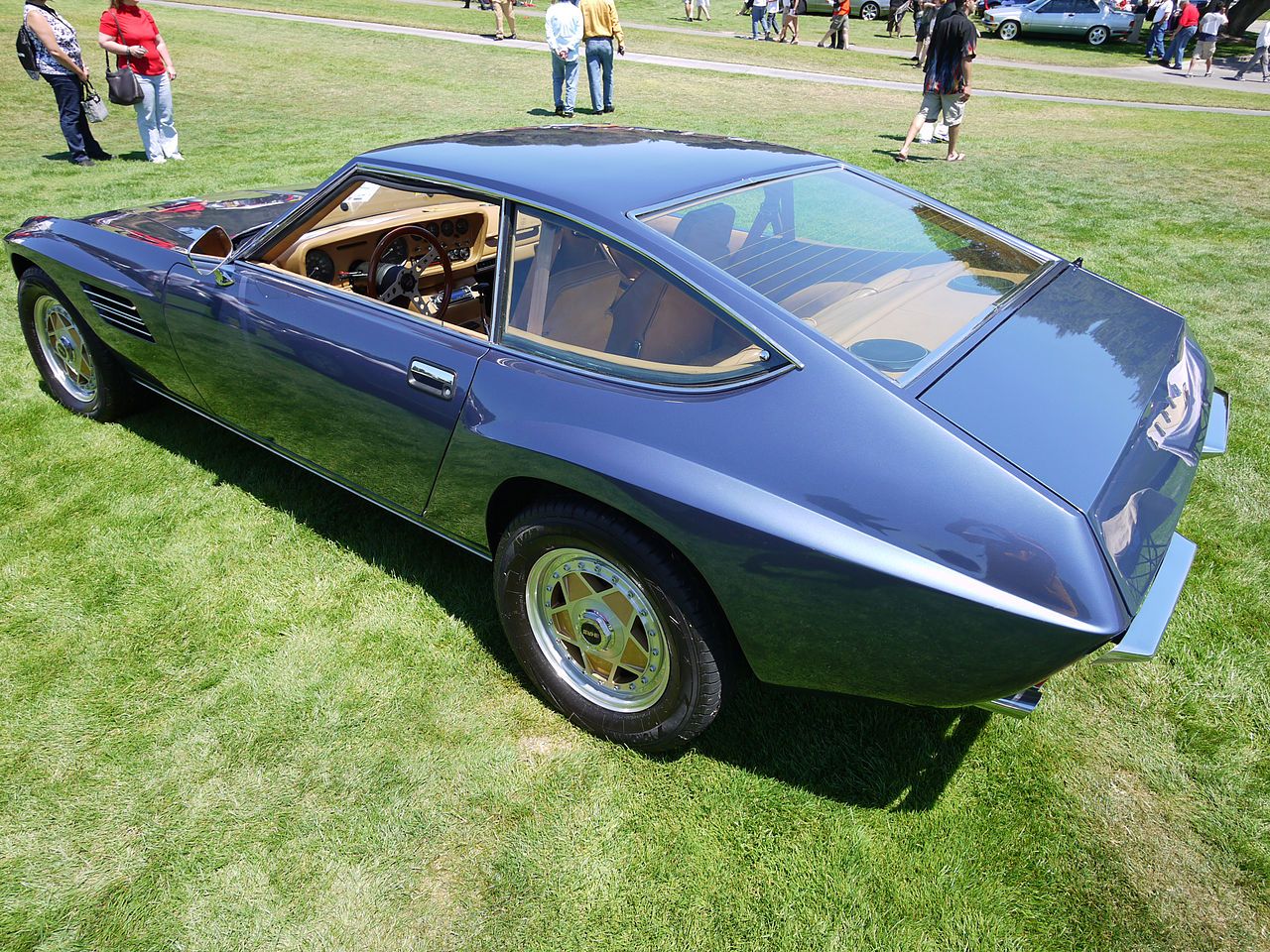Since the inception of the automobile, many carmakers have come and gone. Among them is the Turin-based carmaker, Construzione Automobili Intermeccanica, or simply Intermeccanica. The Italian company came up with a few successful models before it was defunct, and the last of them was the Corvette-based Intermeccanica Indra. Here’s what you need to know about it.
Intermeccanica started out as a tuner
Construzione Automobili Intermeccanica was founded in 1959, in Turin, Italy. The company’s first efforts were in performance enhancements. Intermeccanica was responsible for creating performance kits for various European manufacturers such as Simca, DKW, Peugeot, and Renault. Said kits included dual-barrel carburetors, high-performance camshafts, oil filters, and a whole line of high-performance exhaust systems, for over 50 models.
The exhaust systems were a joint collaboration with an Italian pipe company and were sold under the Intermeccanica name everywhere except for the US, being particularly popular in South Africa.
Intermeccanica gradually moved to make cars and was responsible for the first mid-engine Formula Junior racecar. The company’s first road-going vehicle came in 1960 and was based on the Austrian Puch 500. The sub-compact coupe was a mix of Fiat 500 and Puch 500 parts. Intermeccanica's transition from a tuner to carmaker is similar to that of Steeve Saleen, who started out by making fast Ford cars and eventually, came up with the Saleen S7, S7 Twin-turbo, and more recently, the Saleen S1.
Opel – formerly owned by GM – was responsible for the Indra
The idea of the Intermeccanica Indra started with the Intermeccanica Italia Spyder – another model of the brand, powered by a 351 cubic-inch (5.7-liter) V-8 and design, inspired by the Ferrari California. Approximately 400 of them were built. In 1969, the Italia Spyder started selling across Europe, predominantly in Germany.
This prompted Opel, back then owned by GM, to contact Intermeccanica with the idea of a new model, based on the Corvette, using parts from the Opel Diplomat. Frank Reisner – founder of Intermeccanica – obliged and after debuting at the 1971 Geneva Motor Show, the Indra started being sold through Opel dealerships, exclusively for the German market.
It was, basically, an Italian Chevrolet Corvette
Bob Lutz, at the time working for GM, had an idea to make the Indras from re-bodied Opel Diplomats. Frank Reisner persuaded Lutz that they should use only the Diplomat’s drivetrain and go for a bespoke body and chassis. Franco Scaglione was responsible for the Indra’s design. The Intermeccanica Indra was Scaglione’s last project.
While the end result was not based on a Corvette chassis, the whole design was inspired by the American sports car. The long front hood and short rear deck were very similar to the C3 Corvette, not to mention the pop-up headlights that featured an almost identical design, despite the lenses being a carry-over from the Italia Spyder.
The Intermeccanica Indra had a few, distinctively, Italian design cues, such as the Alfa Romeo Giulia taillights, located under the high-mounted rear bumper - a design element, copied from the Lamborghini Islero.
Intermeccanica Indra was available in three body styles
Initially, the Intermeccanica Indra came out as a two-seater convertible. A year later, in 1972, a coupe version was introduced, also designed by Franco Scaglione. It was, essentially, a convertible with a hardtop slapped on top. Shortly after, a 2+2 fastback coupe was introduced, featuring a hatchback tailgate.
American V-8 power
Through Opel, GM and Intermeccanica had a similar deal as Ford and De Tomaso. The Indra was available with a 327 cubic-inch (5.4-liter) V-8 found in both the Opel Diplomat and Chevrolet C3 Corvette. The engine was good for 270 gross horsepower at 4,800 RPM and 350 pound-feet (475 Nm) at 3,400 RPM. Some versions were rumored to use the version of the engine, featured in the Opel Diplomat, a four-door sedan, which made 230 horsepower at 4,700 RPM and 315 pound-feet (427 Nm) at 3,000 RPM.
A few of the V-8 Indras were said to feature Chevy’s 351 cubic-inch (5.7-liter) V-8 with 280 horsepower. The transmission choices were a three-speed Hydramatic, four-speed manual, and for the 351 V-8 examples, a five-speed manual. The 0 to 60 mph (97 km/h) was possible in 5.6 seconds on to a top speed of 155 mph (250 km/h), according to the manufacturer.
Intermeccanica Indra specifications
|
Engine |
5.4-liter V-8 |
|---|---|
|
Power |
270 HP @ 4,800 RPM |
|
Torque |
350 LB-FT @ 3,400 RPM |
|
Transmission |
Three-speed Hydramatic / four-speed manual |
|
0 to 60 mph |
5.6 seconds |
|
Top Speed |
155 mph |
There was a less-popular engine option
During the car’s debut at the 1971 Geneva Motor Show, some of the orders for the Indra were for the 2.8-liter inline-six version, which packed 165 to 190 horsepower. As the interest was almost, exclusively, towards the V-8 version, the inline-six was discontinued a few months after the Indra’s debut.
GM did not want the Indra to become a Corvette competitor
Since the Intermeccanica Indra was exclusively sold in Germany, GM was more than happy to supply engines to the Italian carmaker. However, after Bob Lutz left GM for BMW, the American automotive giant did not much care about Reisner’s sports car and wanted to control all production, sold through GM dealerships (which, at the time, still included Opel).
Just like GM killed Opel’s dreams of becoming a luxury carmaker, back in the 1920s, it also caused Intermeccanica to, eventually, close down. After Lutz’s departure from GM, Frank Reisner, in a desperate move to capitalize on the Indra, displayed the car at the 1973 New York Auto Show. He received around 300 orders for the Indra.
GM representatives spotted the Indra, however, and reckoned it could steal some Corvette clients. This led to GM refusing to sell any more engines to Reisner while at the same time, Opel dealerships in Germany were banned from selling the Intermeccanica Indra.
The last incarnation Intermeccanica Indra
After General Motors stopped supplying engines for the Intermeccanica Indra, Frank Reisner was forced to heavily re-engineer the car. Reisner built one last batch of Indras, powered by a Ford 428 Cobra Jet V-8. The engine was conservatively rated at 335 horsepower at 5,600 RPM and 445 pound-feet (603 Nm) at 3,400 RPM. However, because of the low hood, the big V-8 could not “breath” well and the power curve reportedly went flat above 4,000 rpm.
The last car was, reportedly, based on the 2+2 fastback body style and finished in green exterior color with brown leather interior. Sadly, the oil crisis had already hit and high-performance, luxury GTs were no longer popular.
A true rarity
Between 1971 and 1974, a total of 127 to 140 examples of the Intermeccanica Indra were made. The Indra Convertible was produced in 60 copies while 40 examples were built. The 2+2 fastback/hatchback. While this accounts for the models, equipped with GM’s V-8, different sources claim that between two and 15 examples were built with the 428 Cobra Jet V-8, in 1975. Only two Indras are known to have been imported into the US, and at least one features the less popular 2.8-liter inline-six engine.
Frank Reisner tried restarting the company in California, after moving there with his family and shipping one of the vehicles with all production equipment there. Financial support was withdrawn, however, and Construzione Automobili Intermeccanica closed down, for good.

